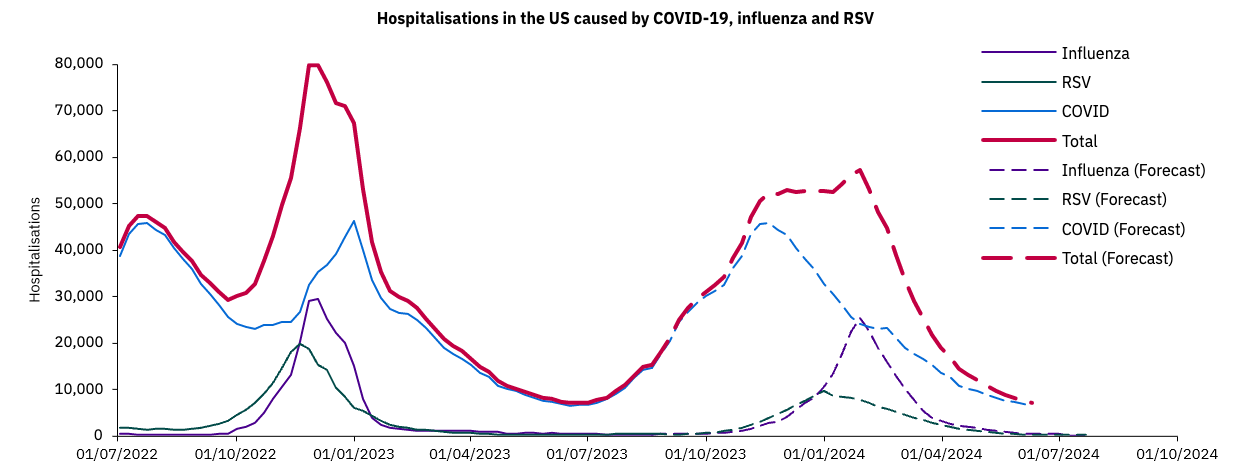‘Tripledemic’ peak in US and UK hospitalisations to be smaller than last year as new COVID waves start in both countries
Airfinity forecasts the ‘tripledemic’ burden of COVID-19, flu and RSV will be less severe this winter as outbreak peaks are not predicted to overlap as extensively as last year.
US ‘tripledemic’ forecast
Our modelling for the US predicts the peak in hospitalisations will be smaller than last winter but the burden will last for a longer period. Airfinity forecasts tripledemic hospitalisations to peak at 57,000 weekly admissions at the end of January, compared to nearly 80,000 during last year’s winter season. However the outbreaks will stretch between September to April, compared to last year’s short but sharp spike between October and February. COVID-19 cases in the US are currently increasing with virus levels on the rise for several weeks. Our forecast predicts this COVID wave will peak in November before flu and RSV early in the new year.

Although this season’s peak will be less severe, the combined hospital burden from COVID-19, flu and RSV is 3.4x times greater than pre-pandemic levels in the US. Total hospitalisations are forecast to reach 1.15m this winter season, up from 315,000 in 2018-19.
UK ‘tripledemic’ forecast
Airfinity’s forecast for the UK also expects its ‘tripledemic’ hospitalisations to peak lower than last year but to see two smaller peaks in September and February.
Our modelling shows the UK is at the beginning of a new COVID-19 wave now which is forecast to peak at 13,500 weekly hospitalisations by late-September.
Flu and RSV waves are forecast to peak in February and November respectively, with the later contributing to a second peak in total hospitalisations.

While the UK’s peak is also forecast to be less severe, the combined hospital burden from COVID-19, flu and RSV is 2.6x times greater than pre-pandemic levels.
Dr Louise Blair, Senior Director of Analysis and Insights at Airfinity, says, “Last winter saw an unprecedented spike in hospitalisations as flu and RSV returned after being suppressed by pandemic restrictions for two years. We expect this year’s peaks to be more in line with historical averages as population immunity is higher and fewer people will be susceptible to severe disease.
“Uptake of COVID and flu boosters as well as the roll out of the new vaccines to protect older people against RSV could help reduce this burden further this year. However, we have seen a decrease in COVID booster uptake over time, which raises concerns about vaccine fatigue and the knock on effects on overall disease burden this winter.”